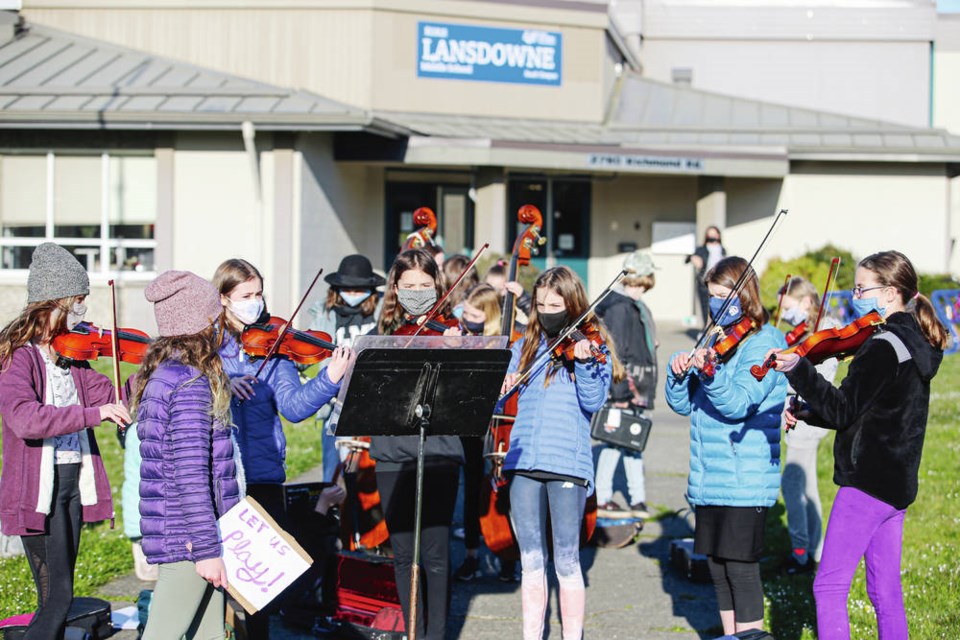The province is injecting $1.2 billion into schools over the next three years, with nearly all of that money going to support increased wages for teachers and other staff and to meet the needs of growing enrolment.
For the Greater Victoria School District, which is facing a $7-million budget deficit, the fact that the province will cover the cost of salary increases in collective agreements is “really good news,” because a major unanswered question for the district’s budget was whether the government would cover that cost, said Carolyn Howe, vice-president of the Greater Victoria Teachers’ Association.
“And that’s a $5-million question, so we think that’s extremely positive for our local context right now,” she said.
It’s not clear whether there’s enough funding in the budget to avoid programming cuts entirely, Howe said.
Due to the deficit, the Greater Victoria School Board has been discussing cuts to music programs, education assistants, meal programs and programs for gifted students. Students, parents and teachers have expressed concern at the potential cuts, with one class at Lansdowne Middle School holding a roadside concert last week to show its support for music programs.
The annual K-12 budget in B.C. is rising to more than $7.1 billion, a hike of about $500 million from the 2019/2020 budget. However, with about $1.1 billion of that being absorbed by wage increases and enrolment, “it’s essentially status quo,” said Kevin Kaardal, president of the British Columbia School Superintendents Association.
Most school districts facing budget shortfalls won’t find relief in the budget, said Stephanie Higginson, president of the British Columbia School Trustees Association.
“This is not a good news budget for those districts this year. And it’s going to result in some difficult conversations at the table,” she said.
Many were disappointed Tuesday by the absence of funding in the budget to continue pandemic measures, such as enhanced cleaning and increased staff.
Higginson said it appears money could come from the province’s contingency fund in the fall, when there is a clearer picture of how the pandemic has progressed, but since school districts are working on their budget plans now, additional funding in a few months would mean last-minute scrambling.
Howe expressed concern about the “wait and see” approach to pandemic support.
“What happened last year was that money came so late, it was really hard to use it effectively. And we know that the pandemic will not be over by September, for sure, and schools need funding and support to make sure that we can cover PPE, improve our ventilation,” she said.
Funding is allocated to support an increasing number of students with special needs, Indigenous learners and English/French language learners, as well as improving mental-health supports in schools, expanding on-site childcare and developing a framework to address racism and reconciliation.
Teri Mooring, president of the British Columbia Teachers’ Federation, said she was pleased to see targeted funding for on-site childcare and a framework to address racism and reconciliation, which the union has been asking for, but echoed concerns about a lack of funding for COVID-19 strategies implemented during the pandemic.
Enhanced cleaning “brought schools up to where they normally should be, because cleaning and custodial time has traditionally been an area that has been cut when districts have had to make cuts,” she said.
Kaardal, of the superintendents association, applauded an additional $3.5-billion investment that will help continue work to upgrade existing schools and build new schools to meet seismic standards. On the Island, new or upgraded schools are coming to Sooke, the Cowichan Valley, Ucluelet and Hornby Island.



